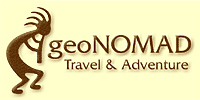 |
|||||
Hygiene & Health |
|||||
Medical InsuranceBefore travelling, verify that you have adequate insurance to cover any medical emergency that might occur during your trip. Treatment in any area outside you home may be verify costly and not covered by any governmental or private health insurance. The cost of air evacuation in case of extreme medical emergency or accident can be ruinous. Read thoroughly any travel insurance you purchase so that you are fully aware of all conditions that must be met to make a claim. These conditions may require immediately contacting the insurance provider for instruction, getting treatment in specified facilities, and collecting appropriate documentation about treatments. Toilet ArticlesCertain articles required for person hygiene should be brought in your luggage. Most toilet articles were are fairly easy to procure while travelling but often one can waste a lot of time to find simple items. It is best to carry sufficient supplies and full length of your trip. Please note: Due to new air travel security regulations, don't carry any kind of sharp or pointed object, such as a nail file, in you pockets or carry-on luggage. These objects will likely be to confiscated when entering the boarding area! Check list
First AidA traveller should always carry a first-aid kit that is commensurate with risks in the region visited and availability of medical help. There several items that should always be carried by traveller such as aspirin, moleskin, disinfectant and bandages. Vitamins may be good to have on-hand for preventive treatment as well as dietary deficiency. Due to the high frequency of digestive problems that are encountered while travelling, a traveller should also carry a non prescription medicine for diarrhoea and powder for making rehydration solution. Mosquitoes, ticks and flies are known to carry various serious diseases. A good insect repellent, containing a high percentage of DEET, is a necessary item. It is also a good idea to carry a piece of nylon gauze type material, larger the size of the bed sheet, that can be used to cover your bed while sleeping in high-risk areas. Appropriate material can often be found in the 'sheer draperies' section of fabric stores. It is light compact and easy to carry. First Aid Check ListMedical Kit - Prescribed DrugsDiscuss with your doctor, before travelling, potential needs for prescription drugs. They may prescribe certain medications as a prophylactic measure due to personal medical history such as susceptibility to certain types of infections, due to health risks that may exist, as well as a lack of availability of necessary drugs, in regions visited. Always carry prescription drugs in the original container with the label and a copy of the original prescription, to avoid any problems, particularly with border officials. Original prescriptions papers may help you to obtain replacement or refills if necessary. Try to arrange to have your pharmacist package the drugs in containers that are suitable for your travels. Avoid any glass containers if possible. Prescribed Drugs Check ListFood HygieneThe number one priority in food hygiene is the purity of water fro drinking and washing food. Refer to the Travel Health section for details. A small water purifier with 0.3 micron and iodine resin filters, if properly used and maintained, will eliminate all micro organisms and viruses in contaminated water. Alternately but not as effective, iodine can be added to water to sterilize it. Adding vitamin C to the water after treatment can eliminate chemical taste. Food Hygiene Check List
|
|||||
| © 2006 CWP - ARCHIdictus | |||||